This past summer, two CSU East Bay students joined peers from across the CSU and UC systems in the Okinawa Memories Initiative (OMI): a research and storytelling project that brings students to Okinawa, Japan, to document the island’s culture, foodways, and lived history. What began as a small collaboration has now grown into a transformative, multi-campus effort that continues to expand opportunities for student researchers.
OMI was founded by Alan Christy, associate professor of history at UC Santa Cruz. The project originated from a 2011 class, in which students assisted in conducting oral history interviews with a Japanese World War II veteran. What surprised Christy was how deeply students connected with the work.
“I had 45 students in the class, and about 30 asked if they could keep working on the project,” Christy said, “Students didn’t want to stop — this never happens.”
Motivated by their enthusiasm, Christy made a bold promise: if the students could raise the funds, he would take them to Japan to continue their research. The fundraising proved successful, and sixteen students traveled with him on the first fieldwork trip, laying the groundwork for what would become OMI.
Okinawa quickly became the focus. Though often overlooked in mainstream Japanese history, Christy emphasized that the region’s cultural distinctiveness and historical complexity are essential to understanding East Asia.
“Okinawa is culturally different from the rest of Japan… If you don’t preserve Okinawan culture, you lose a dimension of Asian history as a whole,” he noted.
Through oral history and community storytelling, students gather memories that might otherwise fade. At OMI exhibitions in Okinawa, Christy said a single photograph often sparked multiple, sometimes contrasting stories, illustrating the layered experiences that shape Okinawan identity.
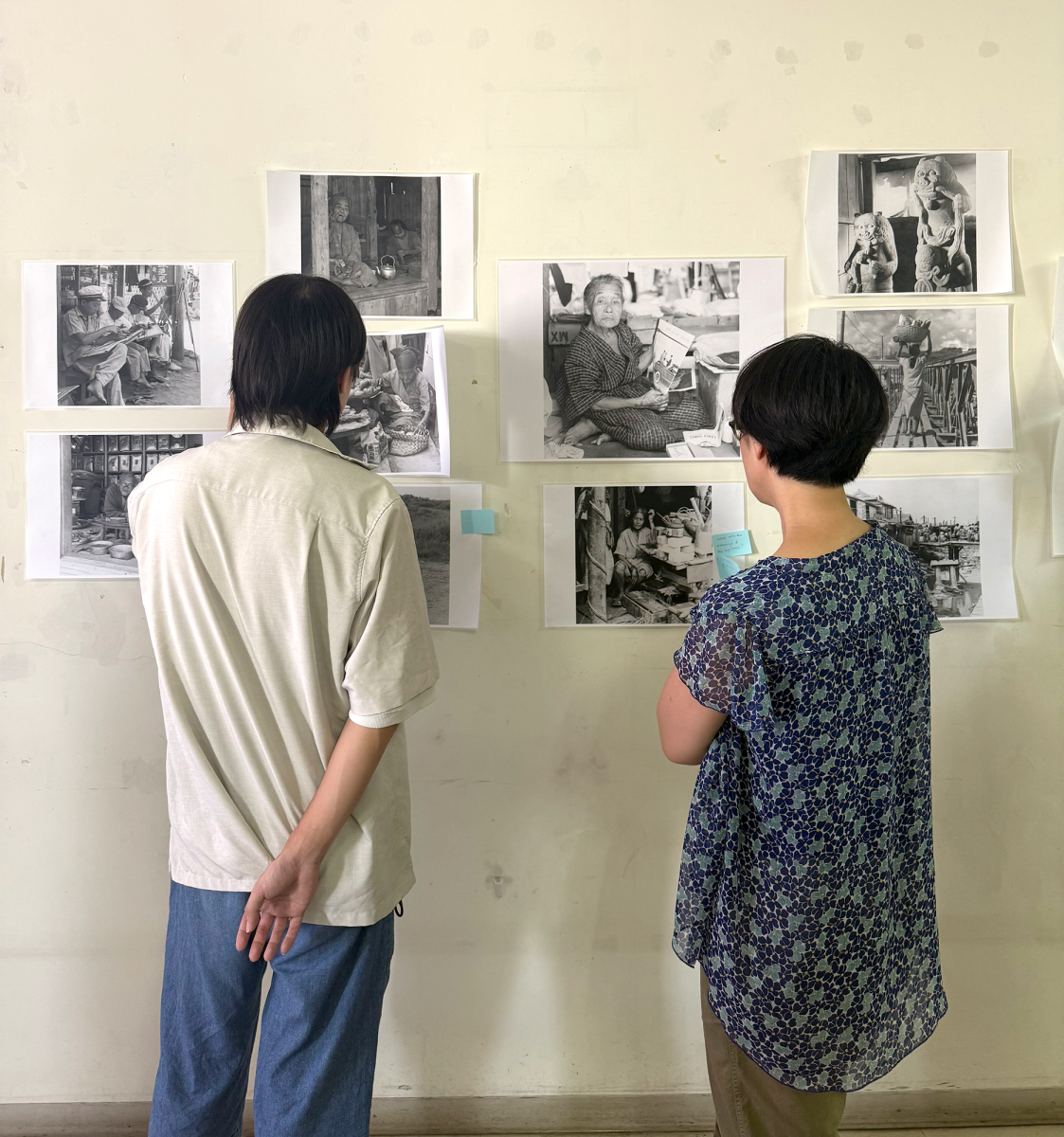 Visitors pause to view the student-curated OMI photo exhibit in Okinawa. Community members often shared their own memories and family histories while engaging with the images. (Giselle Flores)
Visitors pause to view the student-curated OMI photo exhibit in Okinawa. Community members often shared their own memories and family histories while engaging with the images. (Giselle Flores)
“You’d have eight different stories about one photograph. That’s the power of storytelling — it shows complexity and lived experience,” Christy added.
While OMI originally centered around UC Santa Cruz, partnerships expanded to include CSU Monterey Bay and, increasingly, CSU East Bay. This year, East Bay students and faculty received funding to participate, an important step toward deeper cross-campus involvement. Christy says CSUEB students bring new strengths to the project:
“If CSU East Bay students can join the project, OMI gets stronger. Multi-university involvement makes it easier to raise money and expand opportunities.”
Among this summer’s participants was Eric Fondriest, a student at CSU Monterey Bay, whose experience illustrates the profound personal and academic impact of the program. Fondriest described OMI as the first time he had taken part in a structured, faculty-led research trip — a milestone that helped him discover a direction he hadn’t fully considered before.
“This was my first actual research trip with mentors and other students. It changed my life… I realized I want to be a researcher,” he said
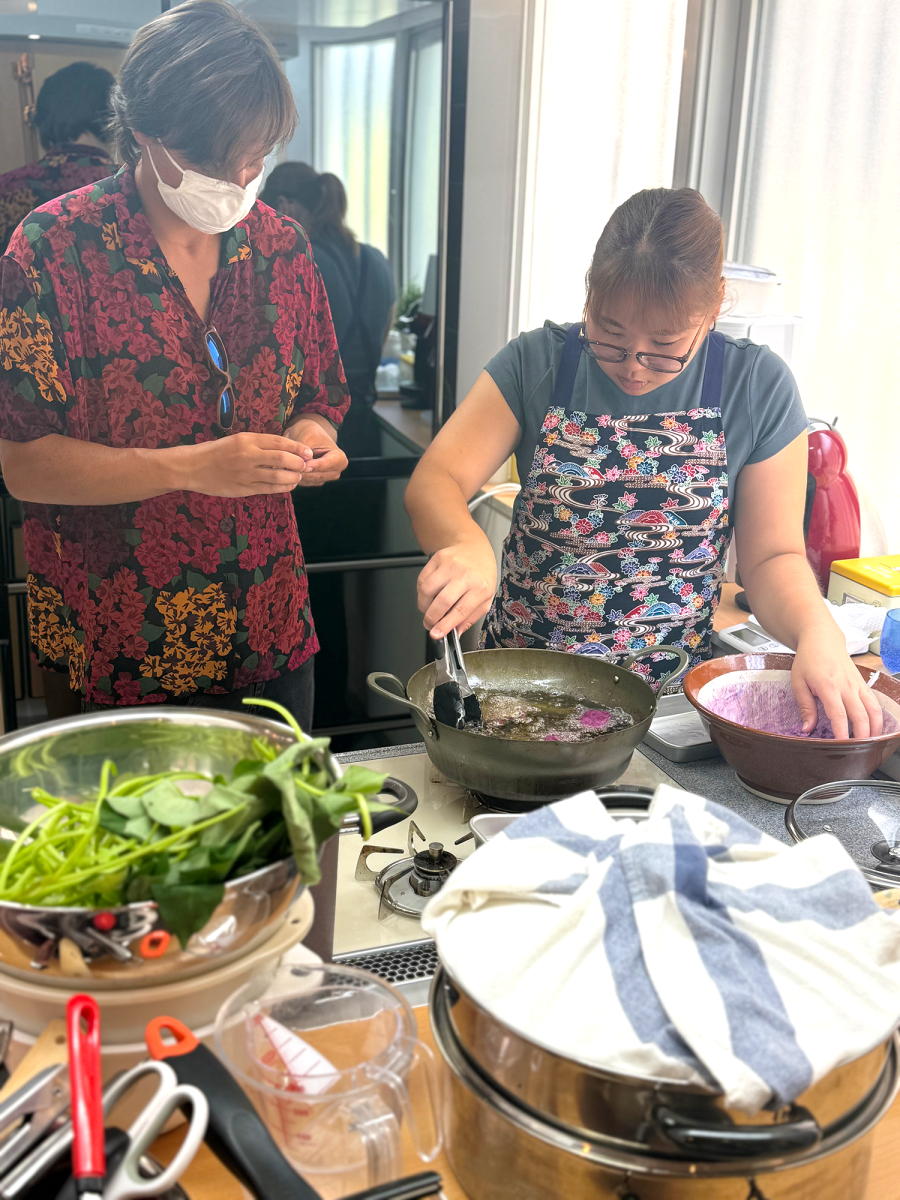 Eric Fondriest (left) works alongside an Okinawan instructor during a cooking workshop focused on traditional dishes made with native purple potatoes — a staple ingredient used during the war and still central to local cuisine today. (Giselle Flores)
Eric Fondriest (left) works alongside an Okinawan instructor during a cooking workshop focused on traditional dishes made with native purple potatoes — a staple ingredient used during the war and still central to local cuisine today. (Giselle Flores)
Inspired by his fieldwork, Fondriest has since applied to the Fulbright Program, using OMI as a central piece of his research background. The trip also solidified long-term dreams of living in Japan and eventually opening a farm-to-table restaurant focused on sustainability and local food traditions.
“I realized in Okinawa that sustainability and tradition go hand in hand — our ancestors already created the solutions we need,” Fondriest noted.
Fondriest said the month-long trip also demanded adaptability, emotional maturity, and a willingness to embrace the unfamiliar:
“You’re living with people for a month in a new country. It takes adaptability, but it’s worth it.”
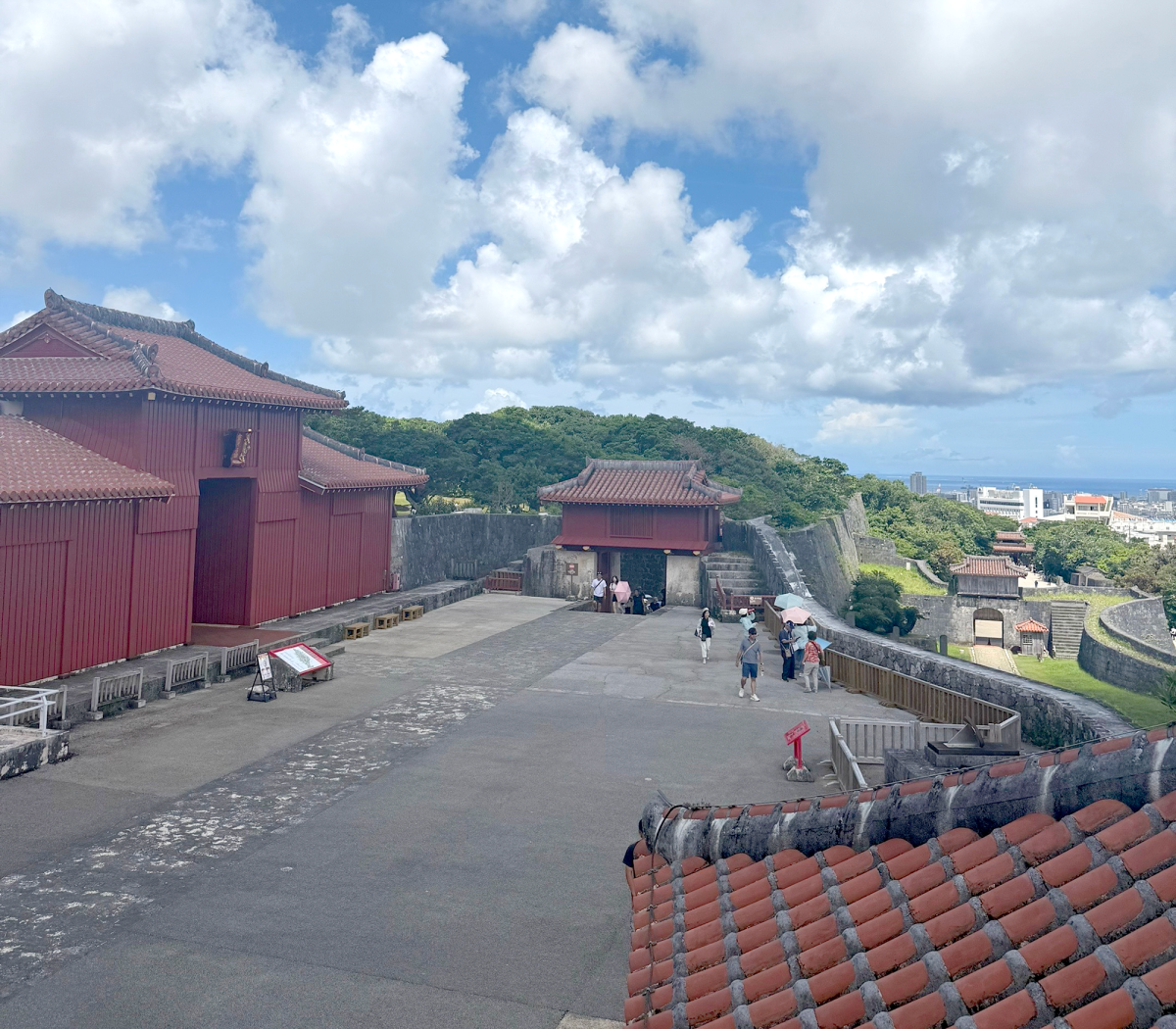 A view from Shuri Castle, one of Okinawa’s most significant historical sites. Students visited cultural landmarks like this to deepen their understanding of Okinawa’s layered history and identity. (Giselle Flores)
A view from Shuri Castle, one of Okinawa’s most significant historical sites. Students visited cultural landmarks like this to deepen their understanding of Okinawa’s layered history and identity. (Giselle Flores)
Christy values this part of the learning process. One of OMI’s goals, he said, is to model curiosity and the idea that learning never stops, not even for professors:
“Learning is ongoing. I want students to see that even after 30 years of teaching, I’m still out there wondering, ‘What is that? How do I do this?’”
Students who participate in OMI gain hands-on experience in oral history, cross-cultural research, media production, sustainability studies, and community engagement — skills that extend far beyond the classroom.
Christy hopes to deepen partnerships with CSU East Bay and expand future opportunities, including multi-year research tracks, such as Okinawan foodways, and documentation of diaspora communities in California.
“Student participation from diverse universities enriches OMI… the stronger OMI becomes, the more students we can support,” he said.
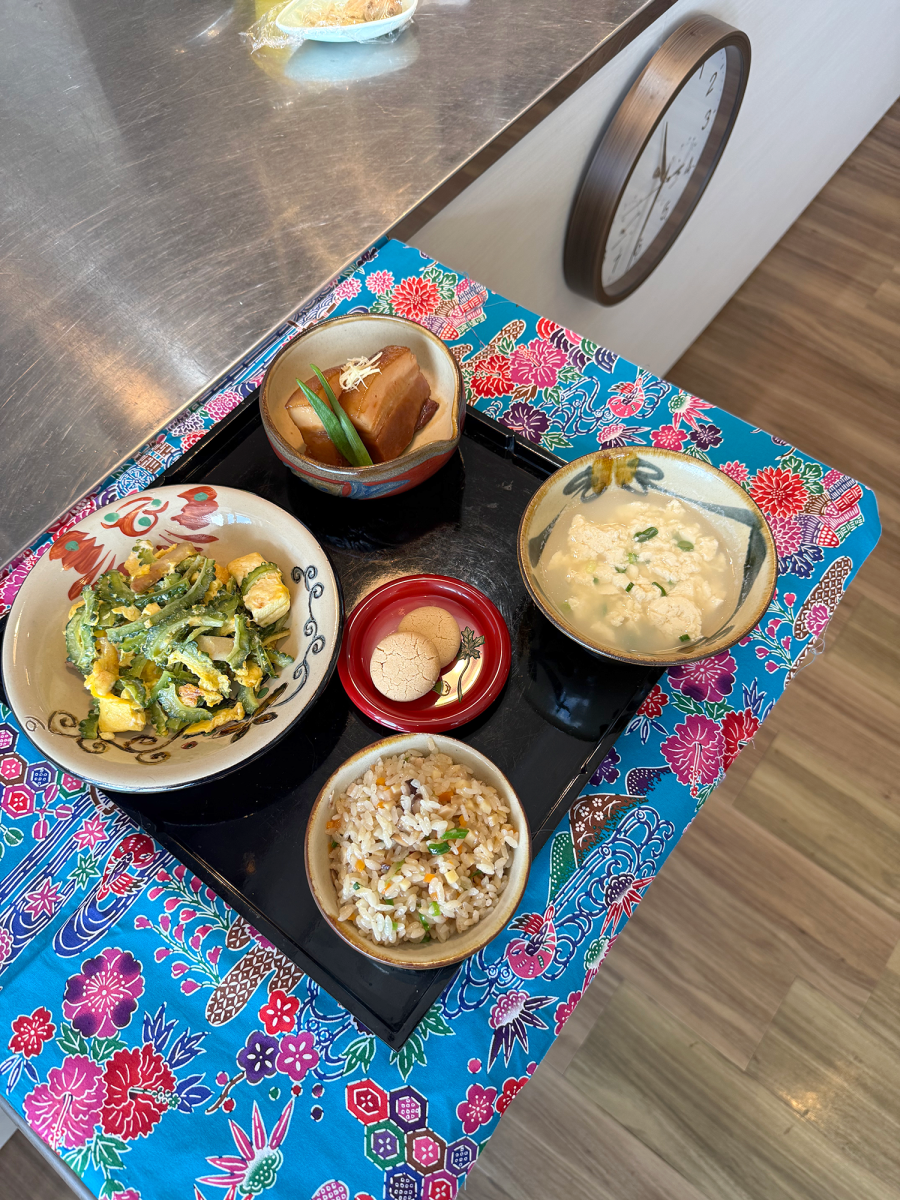 A traditional Okinawan meal prepared during the foodways workshop, featuring dishes like goya champuru, rafute, and jūshī rice. Students learned how food connects generations and preserves cultural memory. (Giselle Flores)
A traditional Okinawan meal prepared during the foodways workshop, featuring dishes like goya champuru, rafute, and jūshī rice. Students learned how food connects generations and preserves cultural memory. (Giselle Flores)
Fondriest encourages students — especially those who are curious, flexible, and eager to grow — to consider applying:
“It’s a chance to grow, travel, learn, meet new people, and figure out who you are.”
Looking ahead, CSU East Bay students should watch for future opportunities to join OMI next year, as the program plans to return to Okinawa. The upcoming cycle will offer students the chance to build their research experience, strengthen cross-cultural communication skills, and participate in meaningful storytelling work alongside scholars and community partners. For those seeking to grow academically, creatively, and personally, OMI provides a rare opportunity to develop their own skillsets while contributing to a project with lasting global impact.

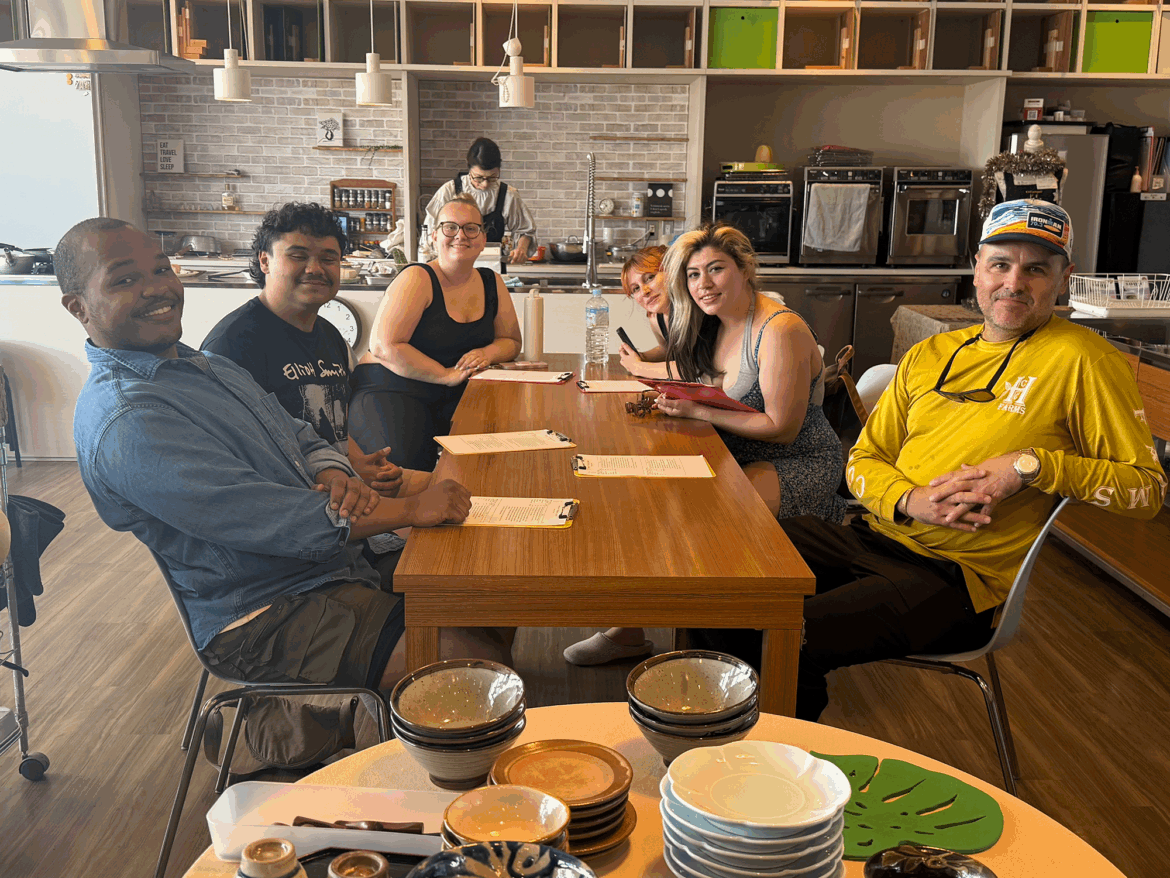
AloJapan.com